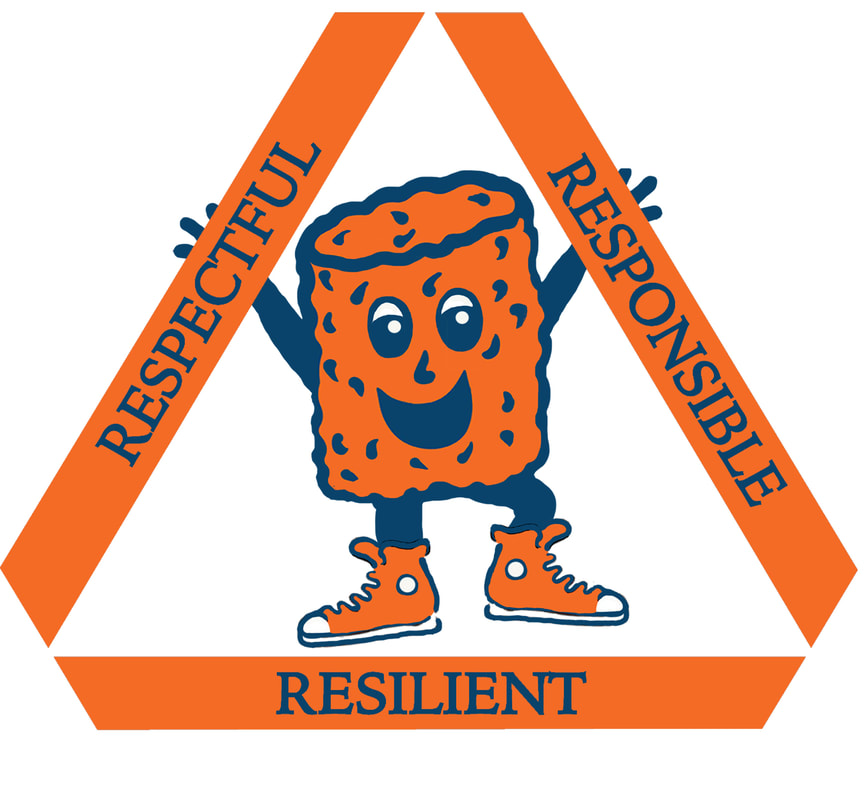TATER TOT BEHAVIOR EXPECTATIONS
Union Ridge Elementary uses a Positive Behavioral Interventions and Supports program - PBIS to address behaviors in school. It is all about setting expectations. Please review the expectations in the chart below with your students to help them be successful at school. Adopting this model at home can be helpful, too. We all know bedtime and morning routines can be a challenge! Create your own chart at home for the expectations you expect and be sure to reward positive behavior. If you have any questions about PBIS please feel free to contact the school.
Union Ridge Elementary uses a Positive Behavioral Interventions and Supports program - PBIS to address behaviors in school. It is all about setting expectations. Please review the expectations in the chart below with your students to help them be successful at school. Adopting this model at home can be helpful, too. We all know bedtime and morning routines can be a challenge! Create your own chart at home for the expectations you expect and be sure to reward positive behavior. If you have any questions about PBIS please feel free to contact the school.
|
PBIS works well at school but it can work just as well at home. As your child’s first teacher, you know your child best. You also know the rest of your family and your family’s core values. Supporting positive behavior doesn’t mean changing the child – it means changing the environment so that it supports and reinforces the kind of behavior you want to see. To make this work, your family will need to decide what behavior you expect and what the consequences will be for negative behavior.
What does PBIS look like at home? Simply transfer the kind of simple, broad school rules for use at home and in the community. Have a family meeting to talk about what it looks like to be responsible, respectful, and helpful before school, after school, and on the weekends. Just like at school, you’ll need 80 percent agreement (four out of five family members for example) on these expectations. Parents and children may have similar ideas or their ideas may be very different. The key to success is having contributions from everyone in the family. Once the expectations have been established, it’s time to set up a reward system. That way your child can be recognized for using the preferred behavior. Remember to establish a plan to reinforce the behaviors you’d like to see! For each time you use negative recognition, you should use positive recognition five times. The more you can “catch” the child doing the preferred behavior, the more you can reward – and reinforce – that behavior. For example, you could put a golf tee in a jar every time you “catch” the child doing the right thing. Create a reward system so that the golf tees can be used to “buy” rewards. Most families find that buying “alone time” with a parent for a special activity works well. Would your child like to fish, hike, go to a movie, or play a game with you? Remember, effective rewards don’t have to cost money. Just because you have taught and reinforced positive behaviors, that doesn’t mean your child won’t have any negative behaviors. The PBIS approach is focused on teaching positive behaviors, but you’ll also need a plan to give meaningful consequences for misbehavior. As a family, you should choose what those consequences will be. Make a list of “minor misbehaviors” and “major misbehaviors” and decide, as a family, how these should be handled. Here are some examples of meaningful consequences for misbehavior. It is important for both parents and children to know exactly what the consequences will be. Remember, just because a child has a misbehavior, that doesn’t mean you can’t reward the child for a positive behavior that happens as a result. For example, a family might decide that the consequence for taking too long in the bathroom twice in one week is to be the last person to use the bathroom for the following week. But offenders can still earn a “tee” for using the bathroom for an appropriate amount of time when it is finally their turn. Children need unconditional love and acceptance from their parents. They also rely on you to help them understand how to act in the world around them. The Positive Behavior Interventions and Supports approach is a major change from the traditional parenting strategy of control and consequence. To make PBIS work at home, you’ll need to be proactive, set a plan, teach to that plan, reward positive behaviors, and define appropriate consequences. Parenting isn’t always easy, especially if your child has challenging behaviors. Helping your child develop positive behavior requires a family commitment to reinforce the expectations, reward positive behaviors, and model and practice them yourself. Using a plan like Positive Behavior Interventions and Supports can give you the tools to teach and reward appropriate behavior. It will refocus your family on the concept of working together and will help you create a more enjoyable and harmonious home life. Information from pacer.org |

